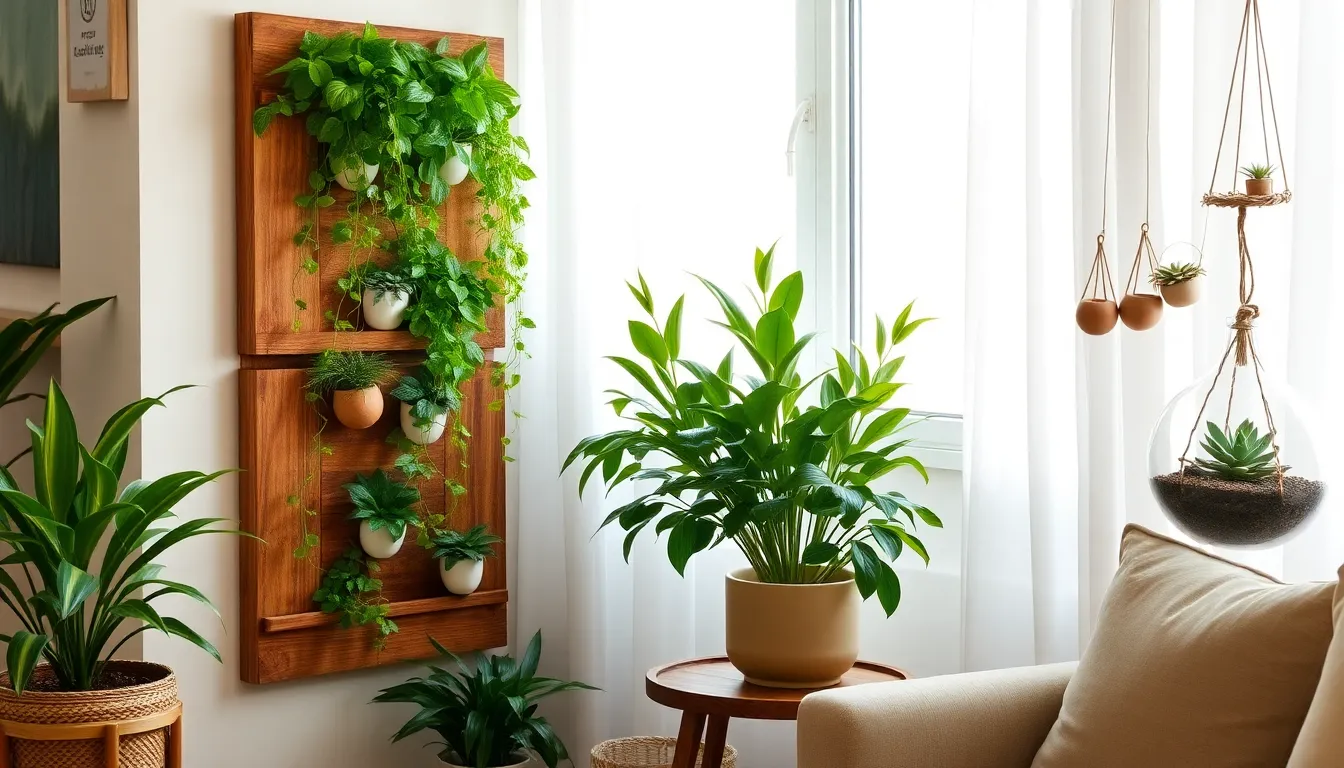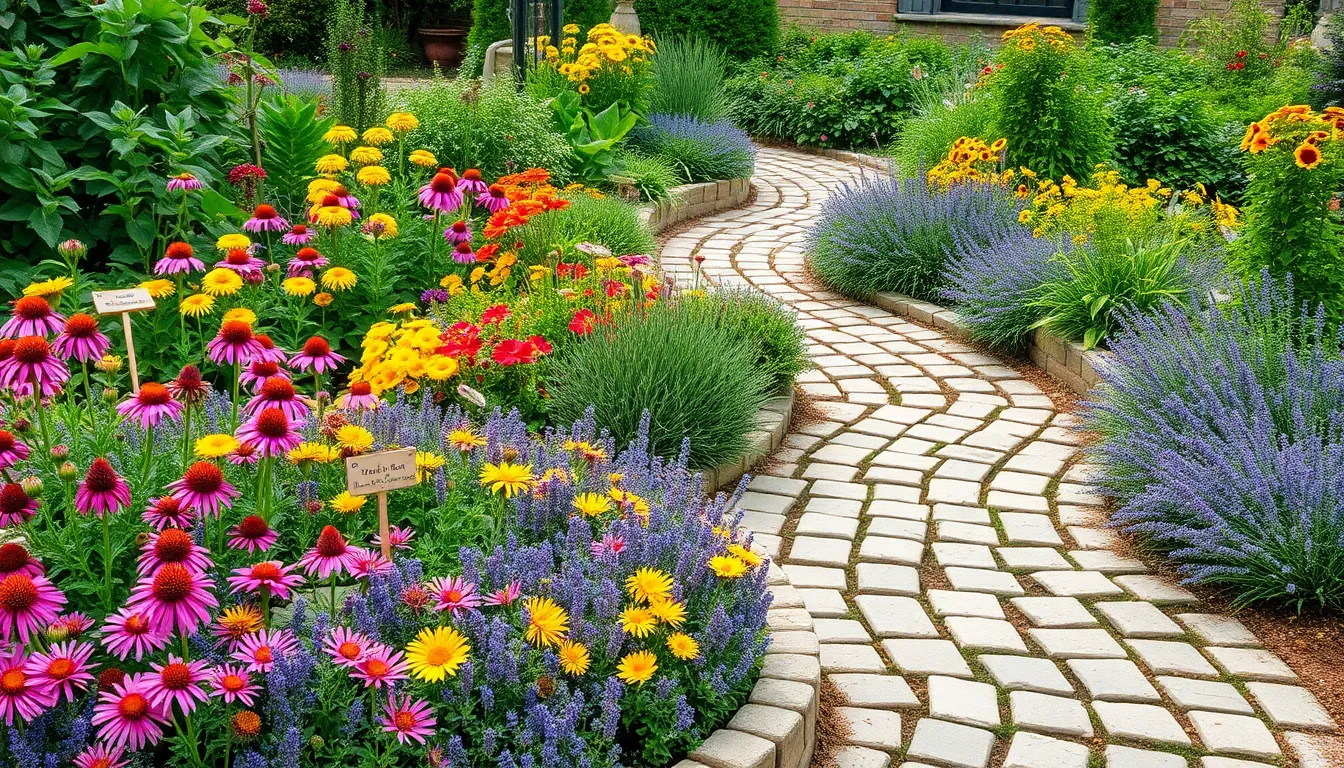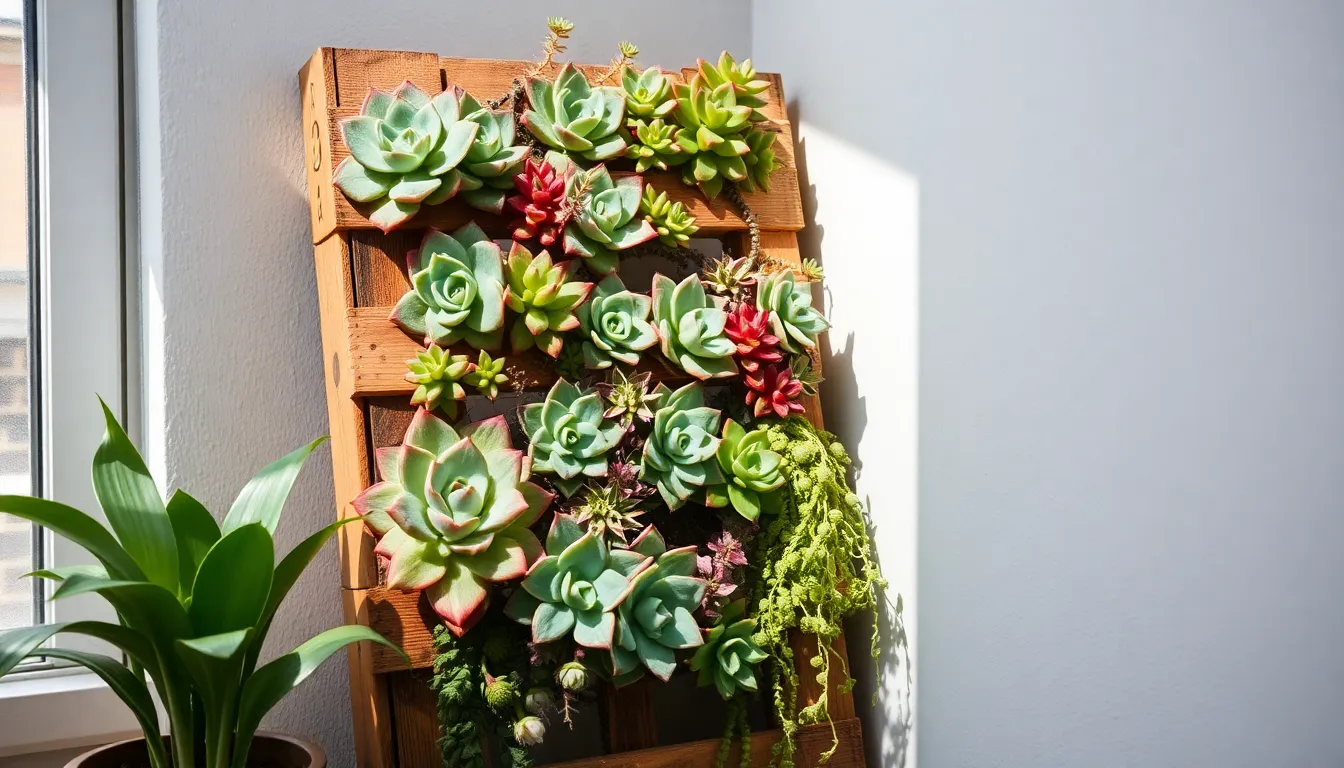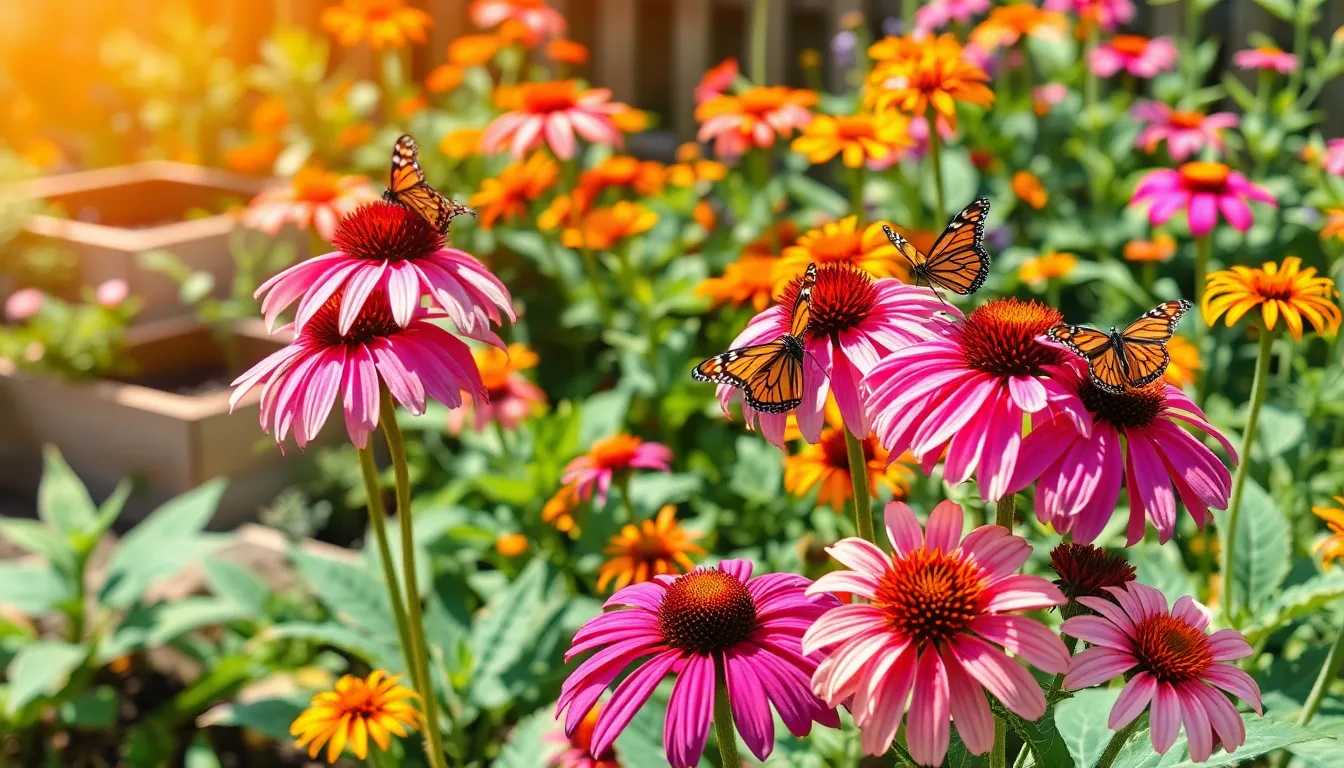Imagine stepping into your home and being greeted by a lush oasis, even if you only have a tiny corner to spare. Whether you’re a beginner just starting out or an experienced green thumb looking to expand your indoor jungle, “Indoor Garden Ideas for Small Spaces” is your key to transforming modest areas into verdant retreats. This guide is packed with innovative ideas that prove you don’t need a sprawling garden to experience the joy and rewards of successful gardening.
For both novices and seasoned growers, the practical benefits of cultivating an indoor garden are immense, from cleaner air to a serene environment that soothes the spirit. You’ll discover clever techniques and plant selections that maximize every inch, turning even the smallest space into a thriving habitat. With this guide, you’ll gain the confidence to cultivate a vibrant living space, filled with the beauty and comfort that only nature can provide.
Utilize Vertical Plant Shelves
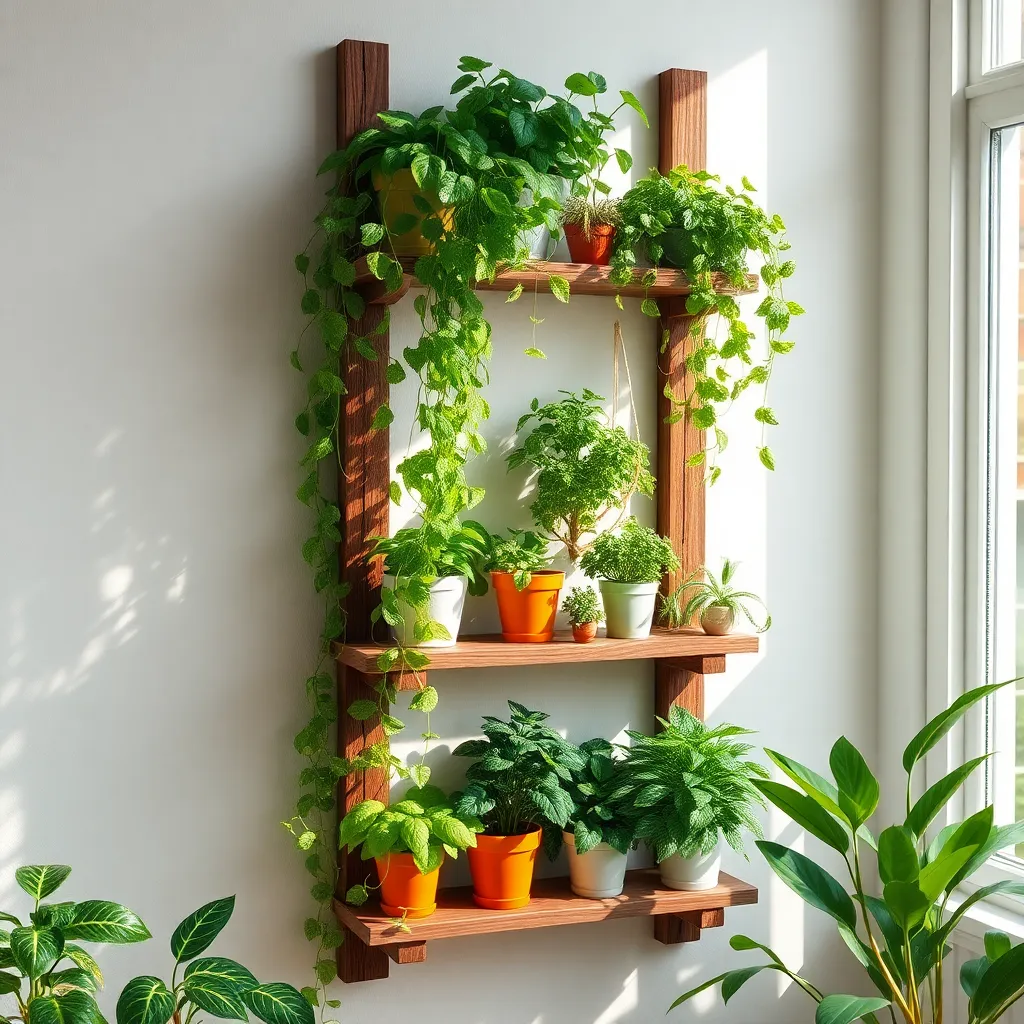
Incorporating vertical plant shelves into your indoor garden is a fantastic way to maximize limited space. These shelves allow you to stack multiple plants vertically, creating a lush, green wall that can enhance any room without occupying much floor area.
When selecting plants for your vertical shelves, consider species that thrive in similar light and humidity conditions. For example, succulents and cacti are great for sunny spots, while ferns and pothos can handle lower light levels and higher humidity.
Ensure that your shelves are sturdy enough to hold the weight of your pots, especially when they are filled with soil and water. Use lightweight, well-draining soil to reduce the load and help prevent root rot, which can occur if the soil remains too wet.
Watering can be challenging on vertical shelves, so try using a watering can with a long spout or a spray bottle for more controlled hydration. It’s important to check the top and bottom pots regularly, as they may dry out at different rates due to varying light exposure and airflow.
Choose Compact Plant Varieties
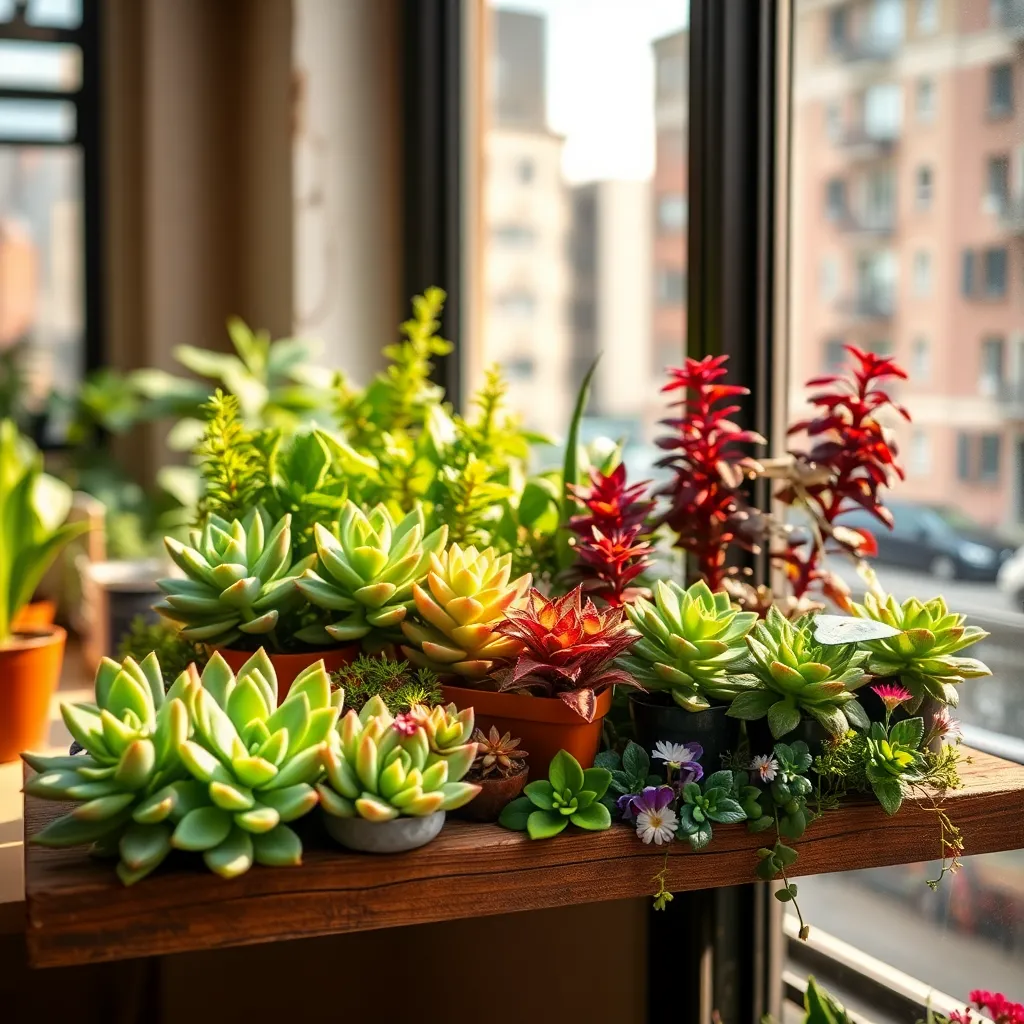
When space is limited, choosing compact plant varieties can make a significant difference in your indoor garden. These plants are bred to maintain a smaller size, making them ideal for tight spaces or windowsills.
A great option for small spaces is the compact variety of herbs like basil and thyme. Not only do they save space, but they also provide fresh ingredients for your kitchen right at your fingertips.
Consider dwarf fruit trees such as lemons and limes, which can thrive in containers indoors. Ensure they receive plenty of sunlight and use a well-draining potting mix to keep them healthy.
For a splash of color, look into compact flowering plants such as mini African violets or dwarf zinnias. These plants thrive in moderate sunlight and require watering only when the top inch of soil feels dry.
When caring for compact plants, it’s essential to monitor their growth closely. Regular pruning will help maintain their shape and prevent them from becoming too large for their space.
Incorporate Hanging Planters
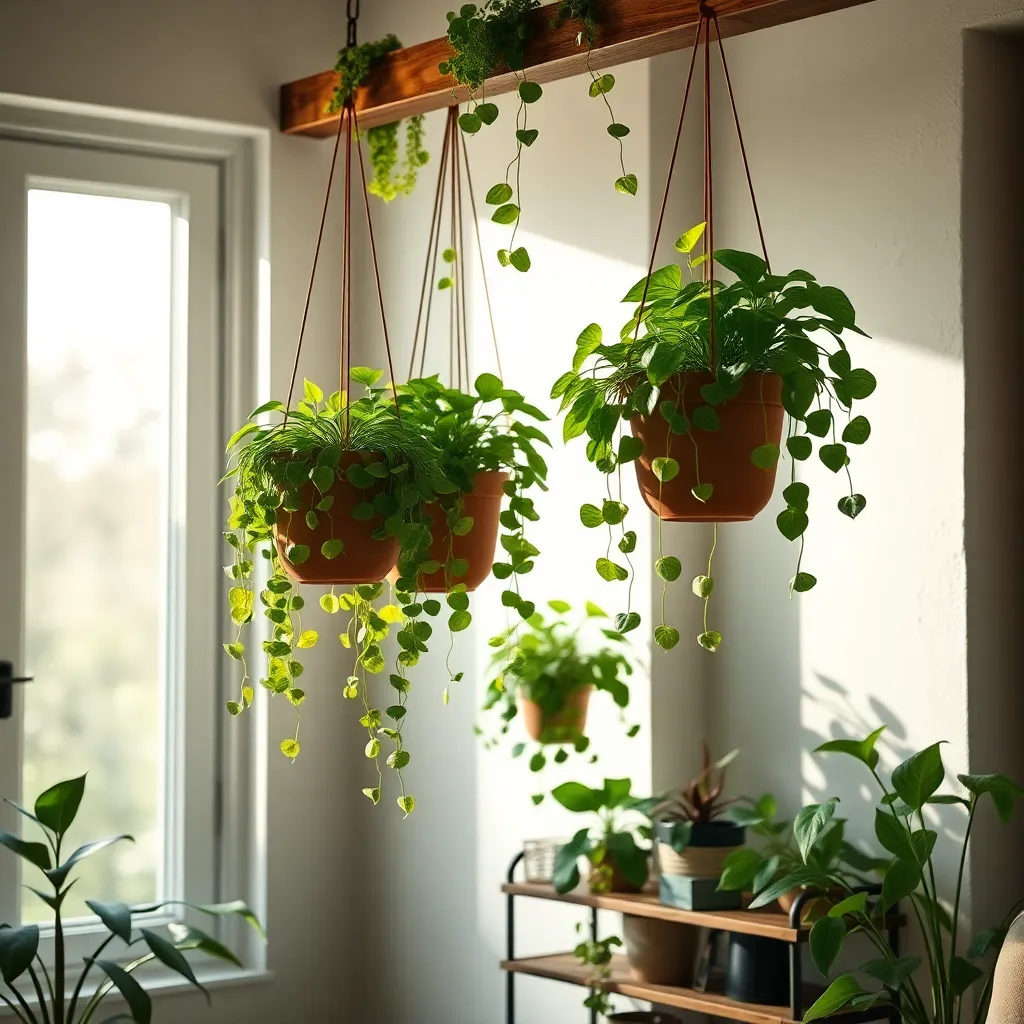
Hanging planters are a creative way to maximize vertical space in small indoor gardens. They allow you to add greenery without taking up precious floor or counter space, making them ideal for compact areas.
To start, choose plants that thrive in hanging conditions, like pothos or spider plants, which are both low-maintenance and attractive. These plants prefer well-draining soil and can be watered when the top inch feels dry, ensuring they don’t become overwatered.
When selecting a spot for your hanging planters, consider areas with indirect sunlight, as direct sun can scorch leaves. If you have limited natural light, opt for plants like philodendrons, which are more tolerant of low-light environments.
Advanced gardeners might experiment with creating a dynamic display by combining different plant varieties in a single planter. This not only enhances visual interest but also allows you to play with textures and colors, adding depth to your indoor garden.
Opt for Multi-Purpose Furniture
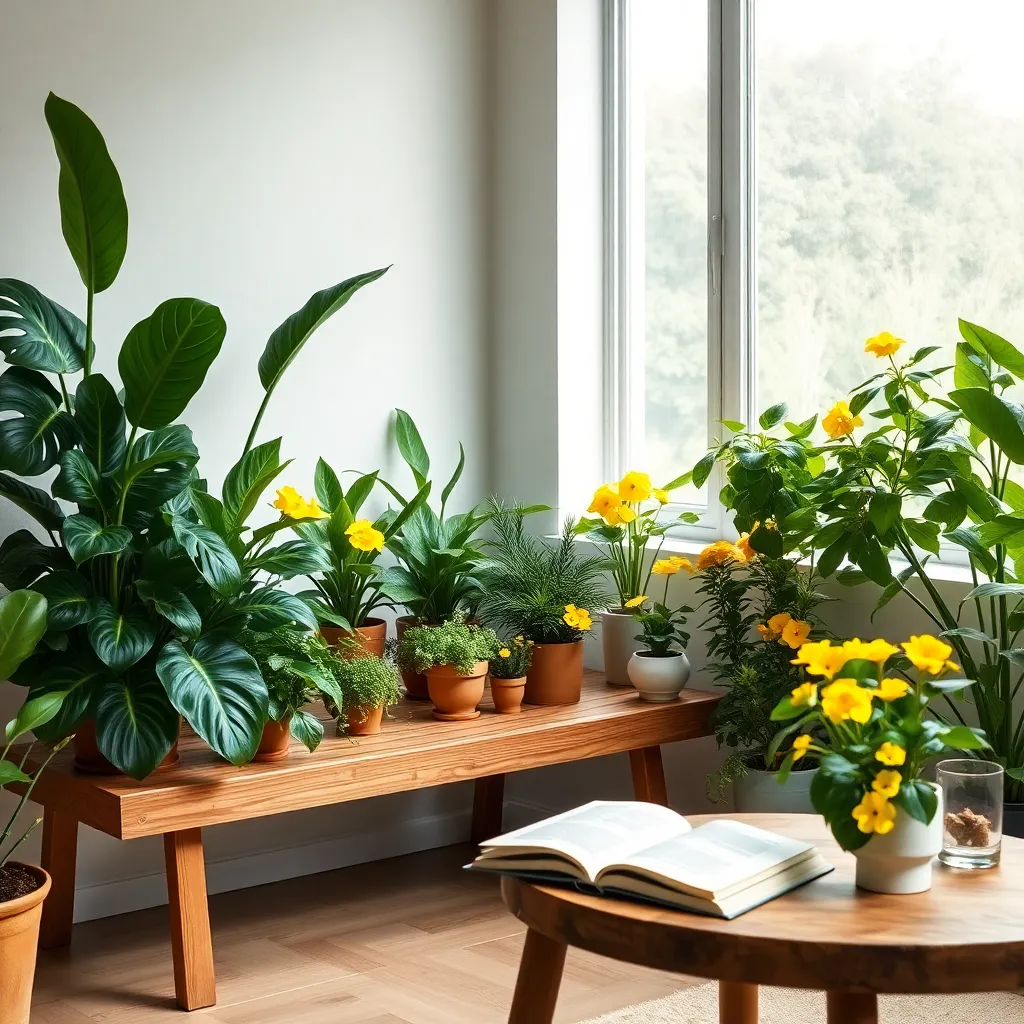
When dealing with limited space, opting for multi-purpose furniture can significantly enhance your indoor garden. Consider furniture pieces that integrate planters, such as coffee tables with built-in plant holders or benches with storage and space for greenery underneath.
These dual-function pieces help you maximize every inch of your living area while adding a touch of nature. For beginners, start with easy-to-care-for plants like pothos or succulents that thrive in various light conditions and require minimal maintenance.
For more experienced gardeners, integrating a self-watering system into your multi-purpose furniture can provide consistent moisture levels, benefiting plants like peace lilies and ferns. Ensure that any furniture you choose has a waterproof lining or a tray to catch excess water, preventing damage to your home.
Moreover, using furniture with adjustable shelving can allow you to adapt the space as your plant collection grows. Select shelves with adjustable heights to accommodate taller plants like snake plants or fiddle leaf figs, offering flexibility as your indoor garden evolves.
Maximize Windowsill Space
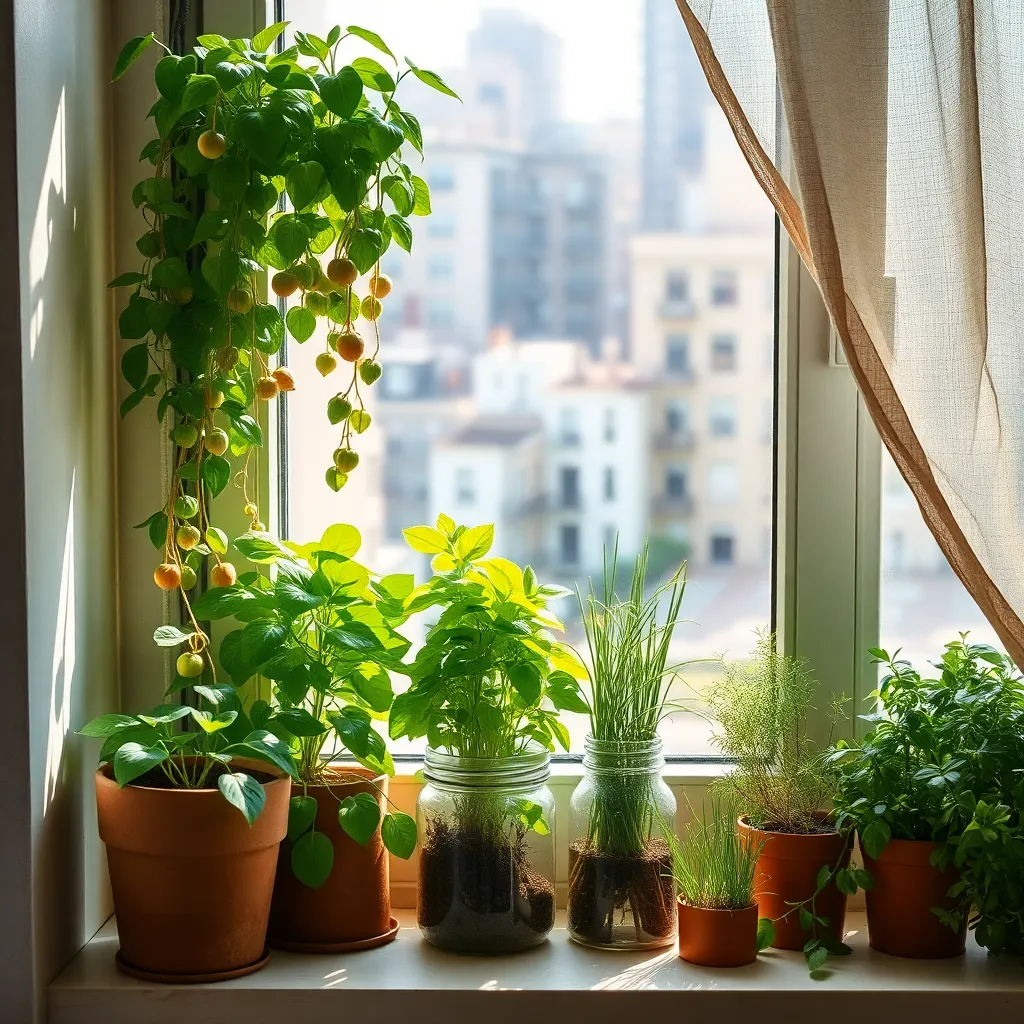
To maximize windowsill space, choose plants that thrive in the conditions your windows offer. Most windowsills receive ample sunlight, making them ideal for herbs like basil, mint, and thyme, which require at least six hours of sun daily.
Consider using vertical space by installing tiered plant stands or hanging small pots. This approach not only increases your planting area but also creates an attractive display that can brighten up any room.
For those with limited sunlight, opt for shade-tolerant plants such as pothos or peace lilies. These plants thrive in indirect light and require less frequent watering, making them low-maintenance options.
Ensure your plants have the right soil by using a well-draining potting mix, which is crucial for preventing root rot. Regularly check the moisture level of the soil by inserting your finger about an inch deep; water only when the soil feels dry.
Conclusion: Growing Success with These Plants
Creating an indoor garden in small spaces can powerfully enhance relationships by fostering collaboration, nurturing shared interests, and cultivating a peaceful home environment. First, we explored how working together on a garden project can strengthen bonds through teamwork and communication. Next, we discussed the calming effects of greenery, which can ease tensions and promote a harmonious atmosphere. Third, we highlighted the joy of nurturing life together, fostering a sense of joint accomplishment and purpose. Fourth, we examined how shared gardening responsibilities can improve daily interactions and deepen mutual respect. Lastly, we emphasized the importance of creativity and compromise in designing a space that reflects both partners’ styles.
As an immediate step, choose a small area in your home to transform into your green oasis. Whether it’s a windowsill or a corner shelf, start with a few easy-to-maintain plants and grow from there.
Bookmark this article to revisit these principles and keep your relationship blossoming. Remember, every seed you plant in your relationship can grow into something beautiful and fulfilling. By nurturing your indoor garden together, you’re also cultivating a future filled with love and cooperation. Here’s to your thriving relationship!

